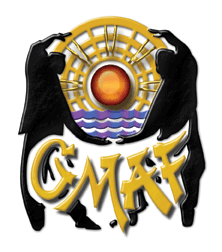Weapons have long been an important part of martial arts. We often think of martial arts as mostly “hand-to-hand” (empty hand) defense, but weapons are also an integral part of traditional training.
Whether you are looking for a good first weapon for yourself or your child, here are some things to consider.
[Podcast version available at the end of this post.]
Weapon Safety
Weapons were invented originally to seriously injure or even kill people, so safety is the first thing you should consider when selecting which one to learn first. Any weapon that is sharpened and/or thrown (e.g. knife, sword, throwing stars, spear, axe, halberd, naginata) should not be a “first” weapon. I also recommend against starting with “long’ weapons (e.g. 6-foot staff, pole weapons) until you or your child are trained with shorter versions of non-sharpened weapons. Flexible weapons (e.g. nunchaku, chain whip, flail, rope dart) are also best saved until later in training. Safety is a primary reason: for you, your child and anyone standing nearby.
Some of the “safer” weapons for beginners are yawara sticks and short wooden sticks (one to two feet in length).
Weapon Instruction
Learning a weapon on your own is not recommended. Not everyone can afford professional training, but hurting yourself or someone else while you’re trying to figure out how to use a weapon could end up costing you a lot more money and unnecessary pain.
If you are going to pay someone to teach you how to use a weapon, check out their credentials and experience carefully. I recommend that for any martial arts training, but especially for weapons.
An experienced weapons instructor will emphasize safety at all times. They will also be able to share the history of the weapon and how best to use it in both traditional and modern situations.
Traditional training includes instruction on how to use the weapon according to proven training methods that have been passed down from teachers to students for centuries.
Modern training includes instruction on how to use “environmental” weapons (objects found in your natural environment – on you or around you) in similar ways to the traditional weapon you’re learning. If you know how to use a traditional yawara stick, for example, you’ll be able to use a pencil, pen or other similar object to defend yourself. If you know how to use a traditional escrima stick, you’ll be able to use a small tree branch, dowel rod or other similar object to defend yourself. The same is true with many other traditional martial arts weapons.
Weapon Story
My first martial arts weapon as a child was a yawara stick, also known as a “palm” stick because it fits neat in the palm of your hand. I trained with that for several months before moving to a longer stick. I eventually trained with many traditional weapons from Japanese, Okinawan, Chinese, Korean and Filipino martial arts, but that first yawara stick remains in my memory as my favorite. It was easy to use, easy to carry in my pocket, and legal at the time. Plus, it was my first weapon and that’s always special.

Legal Weapons
That brings us to the importance of knowing local, state and federal laws concerning martial arts weapons. If you’re going to learn a traditional martial arts weapon, make sure you know the laws that would impact your training and transporting it between home and class or demonstration. Laws can vary from state to state.
As for using your traditional weapon in a real self-defense situation, keep in mind that even if your weapon is classified as “legal,” the fact that you have specialized training in the use of the weapon may not sway a jury in your favor. Your instructor should know the laws that affect your training and use in self defense.
[Sensei McGee is a 7th Degree Black Belt and teaches both armed and unarmed self defense in Huntsville, Alabama.]
[Join our Grace Martial Arts Facebook Community!]

Protecting the Vulnerable (Part Five) – Grace Martial Arts
Grace Martial Arts © 2018


